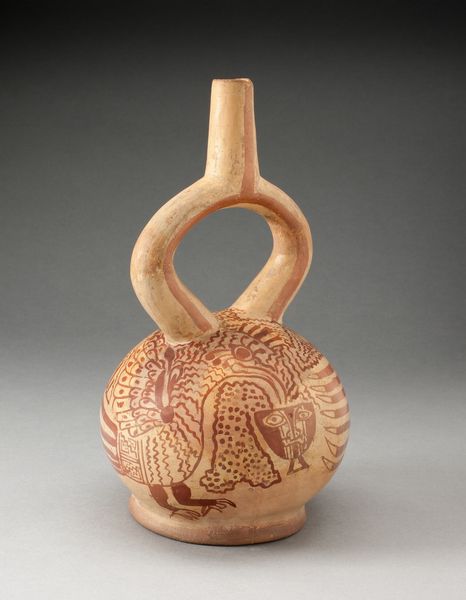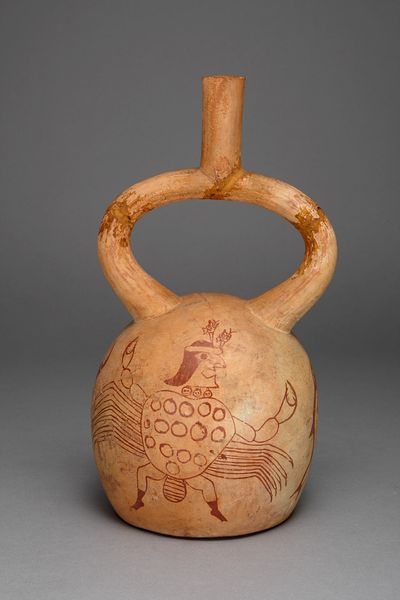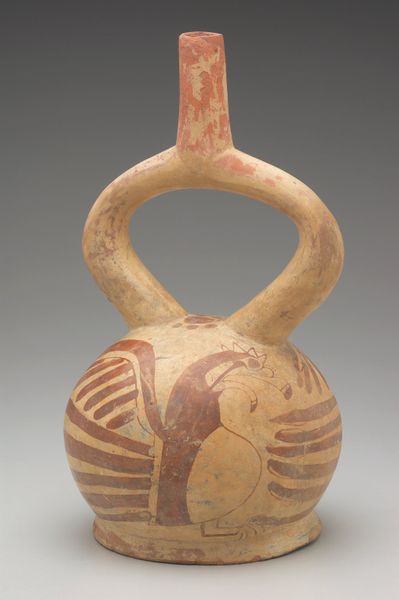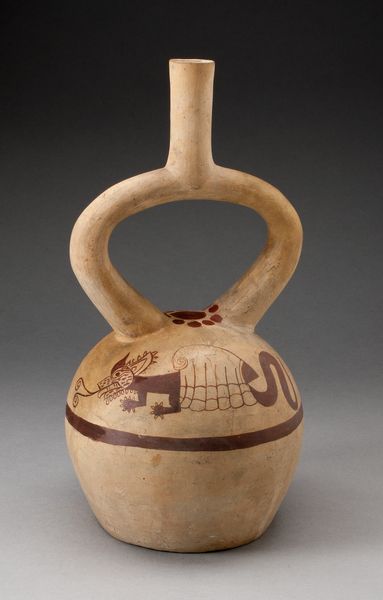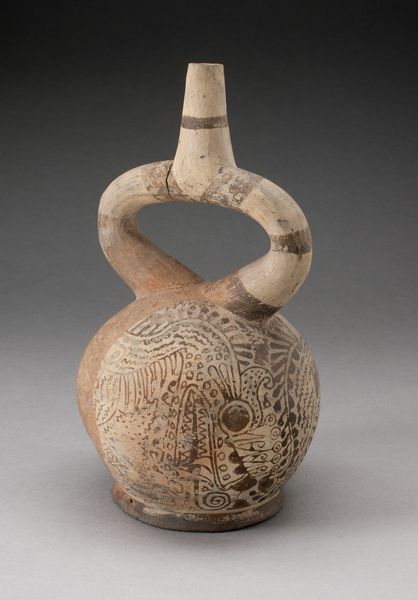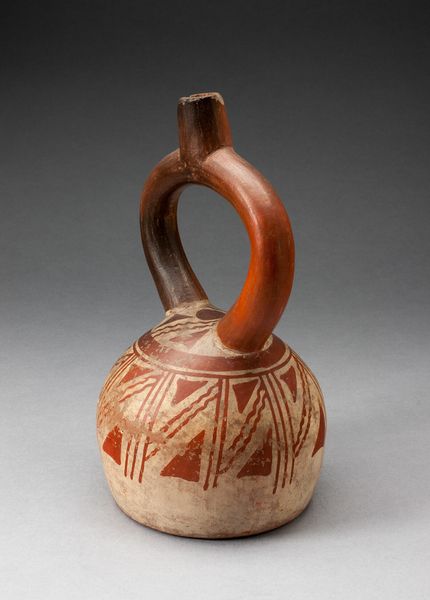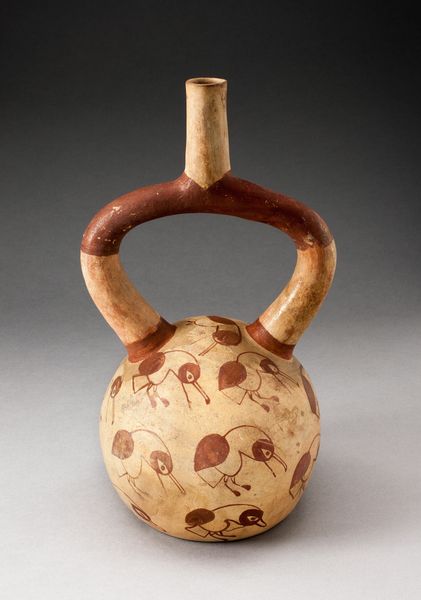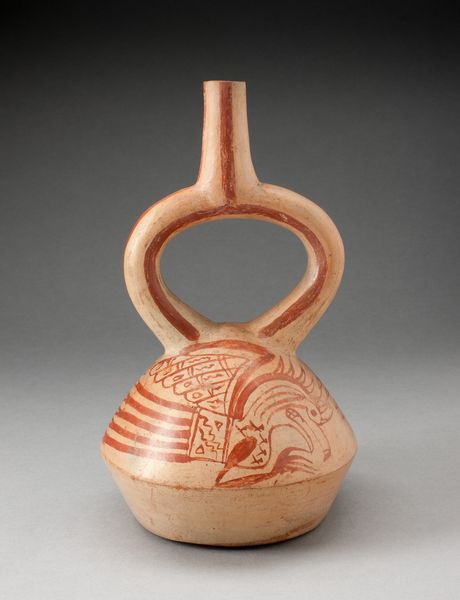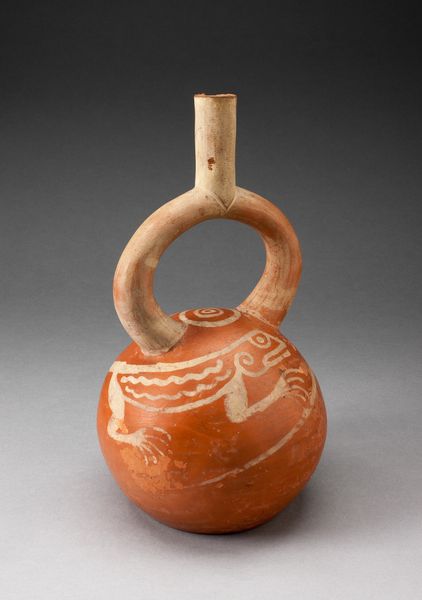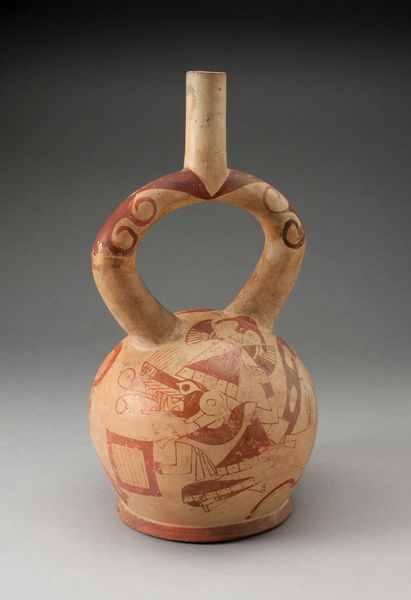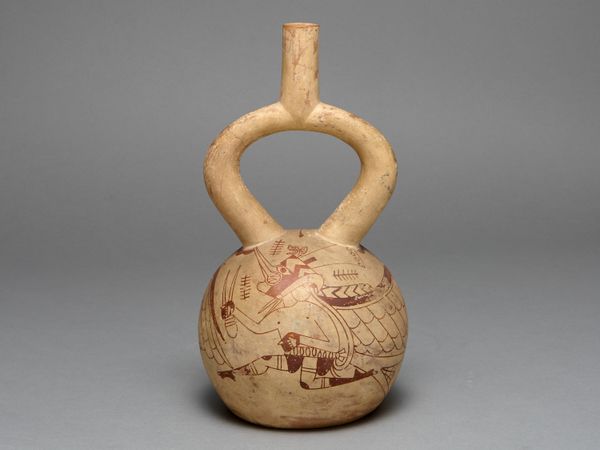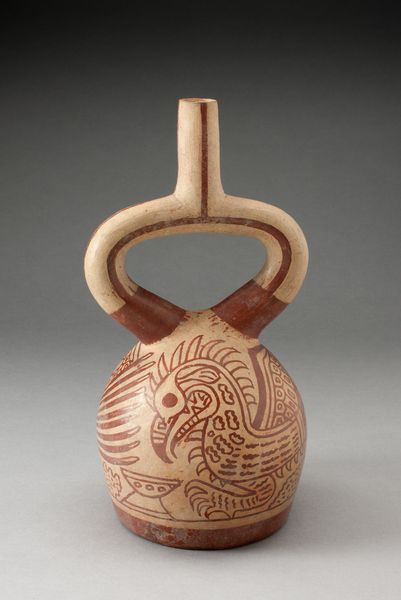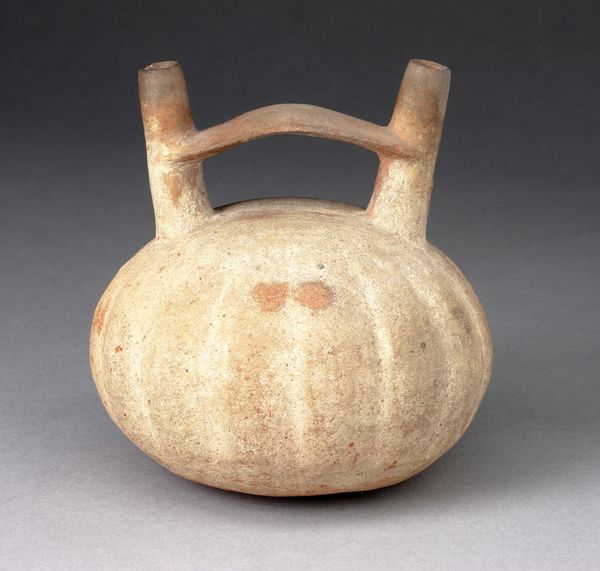
ceramic, terracotta
#
ceramic
#
vessel
#
terracotta
#
indigenous-americas
Copyright: Public Domain
Editor: This ceramic "Vessel" dates back to the 5th or 6th century and was created by the Moche people. I find the stirrup spout intriguing, it looks almost like a handle and it gives the vessel such a unique silhouette. What do you make of this form? Curator: Well, consider the undulating lines representing what appears to be maize or perhaps manioc. In many ancient cultures, depictions of sustenance weren't merely decorative; they represented abundance, fertility, and continuity. These vessels were not simply utilitarian objects. Editor: So you’re saying this imagery would connect with people, reinforcing shared beliefs? Curator: Precisely! Visual symbols, repeated across generations, cement a community’s understanding of its place in the world. Consider how the maize god in many Andean cultures is both giver of life and connected to ancestor veneration. It ties the past to the present and the future. The imagery evokes the life cycle; seed to plant, death and rebirth. Editor: That's fascinating. I hadn't considered how the iconography relates to those long-held traditions and that continuity. It is more than just pretty designs, then. Curator: The power of an image resides in its ability to evoke shared understanding and connect across generations. The ceramic *Vessel* provides continuity between those past ritual actions and present-day observations. Editor: Thinking about how people interacted with this imagery centuries ago really changes how I see it. I'll definitely look at art with a different eye now.
Comments
No comments
Be the first to comment and join the conversation on the ultimate creative platform.
